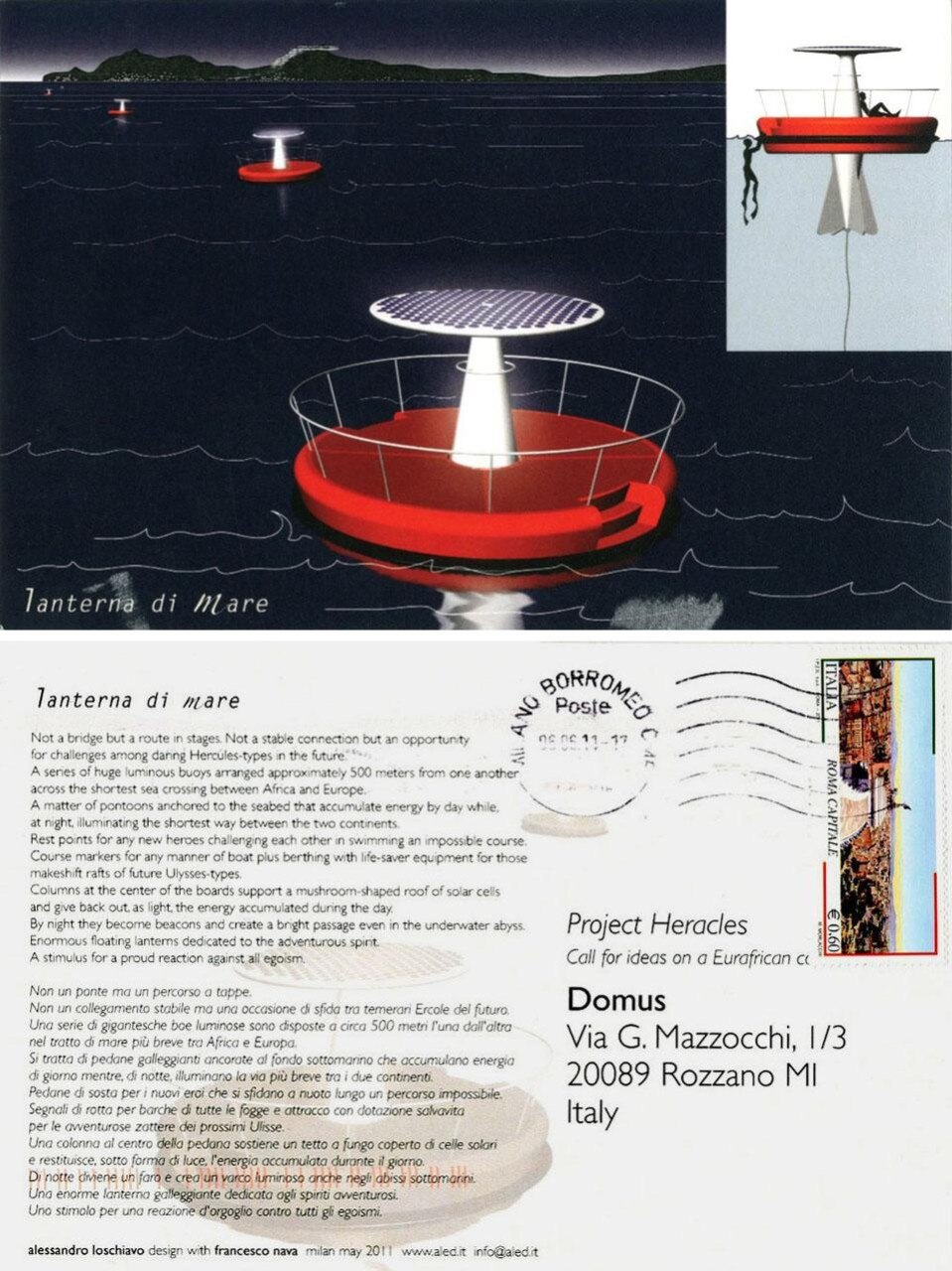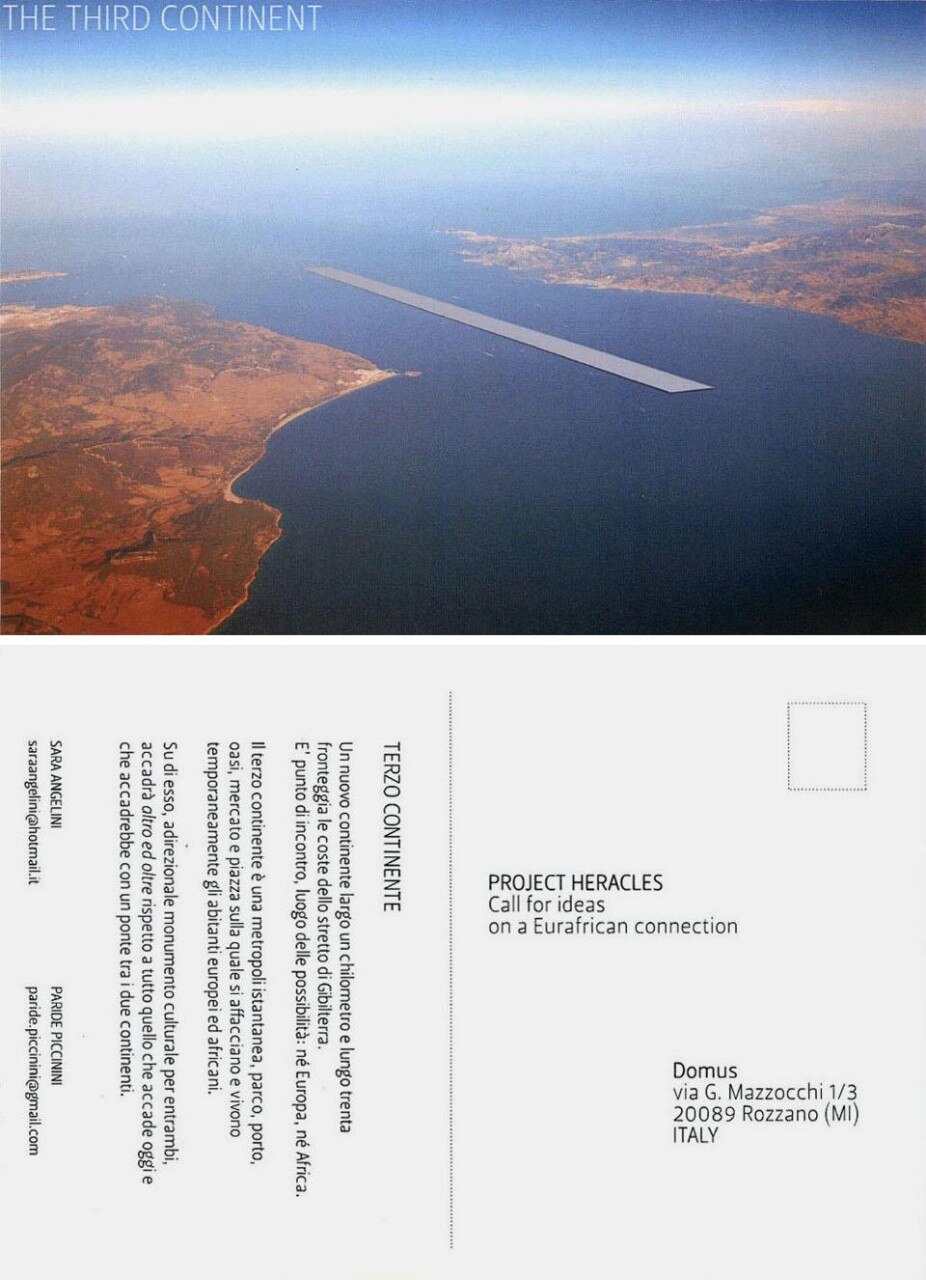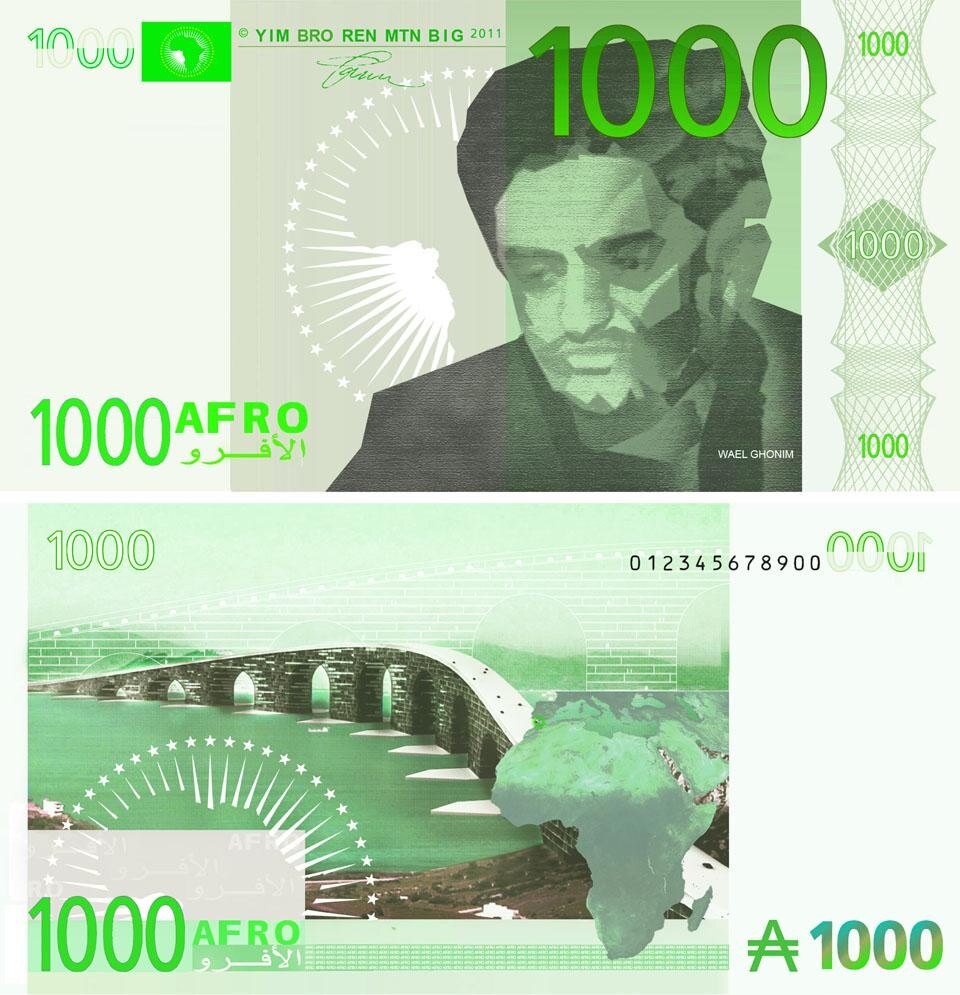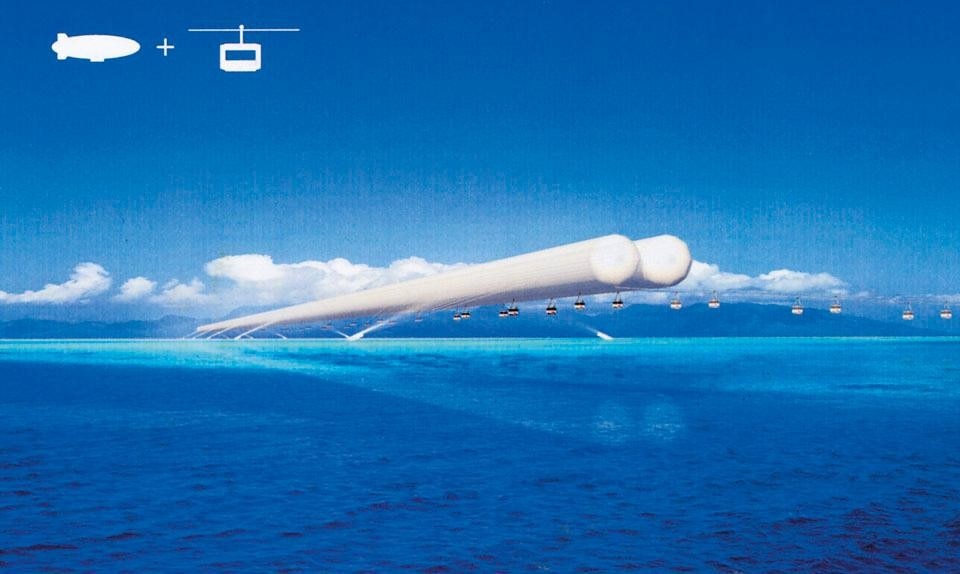In the minds of those who live on its shores, the Mediterranean Sea has always been a place in and of itself: a water world as familiar as home, yet belongs to nobody in particular. The Mediterranean borders 21 states but, despite the physical proximity of these countries, it is a source of difference and otherness.
In the time when mass tourism was not yet available to get from one coast to the other, travel meant facing a crossing, creating a violent psychological distance that today is rapidly becoming irrelevant. I adopted as the criterion for selecting these postcards a perspective that seeks to break the geopolitical assumptions that appear responsible for the perpetuation of differences, perhaps even suggesting possible solutions. An underground continental passage, an airborne funicular, backed by aircraft, a submarine railway, for example, can suggest new ways of understanding cohesion in this region, because they appear to exist just on this side of reality.
Postcard #38. [above] The Airship + Cable Car strategy to bridge between the Europe and Africa immediately caught my attention for the vaguely retro modes of transportation employed. Zeppelins hearken to a steampunk past, while the aerial lifts, being a mode of transportation that flourished with the rise of tourism in the 1920s, and together they suggest to me a parallel past where such a bridge was once a reality. It projects into the past, what seems unlikely in the future.
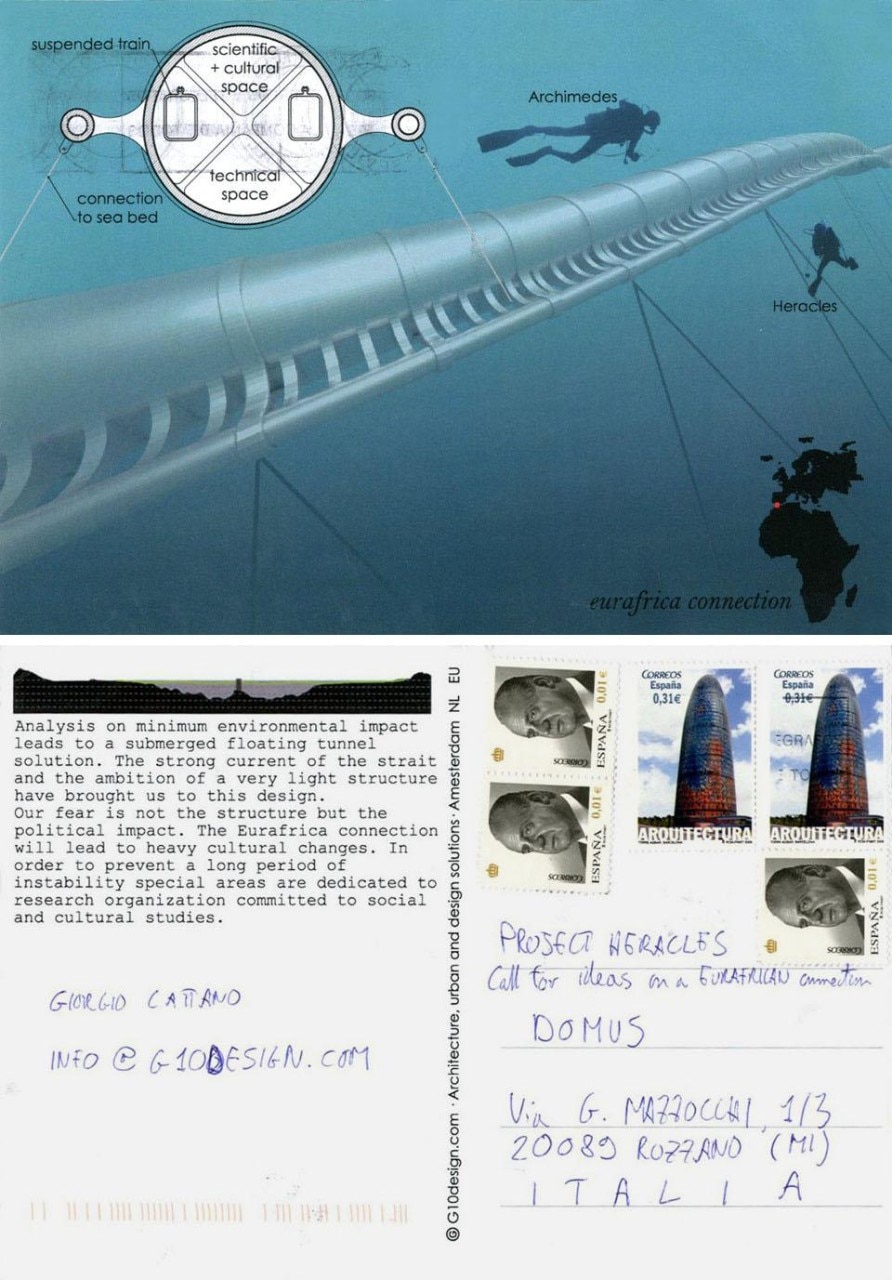
Above: Eurafrica connection, Giorgio Cattano, Italy.
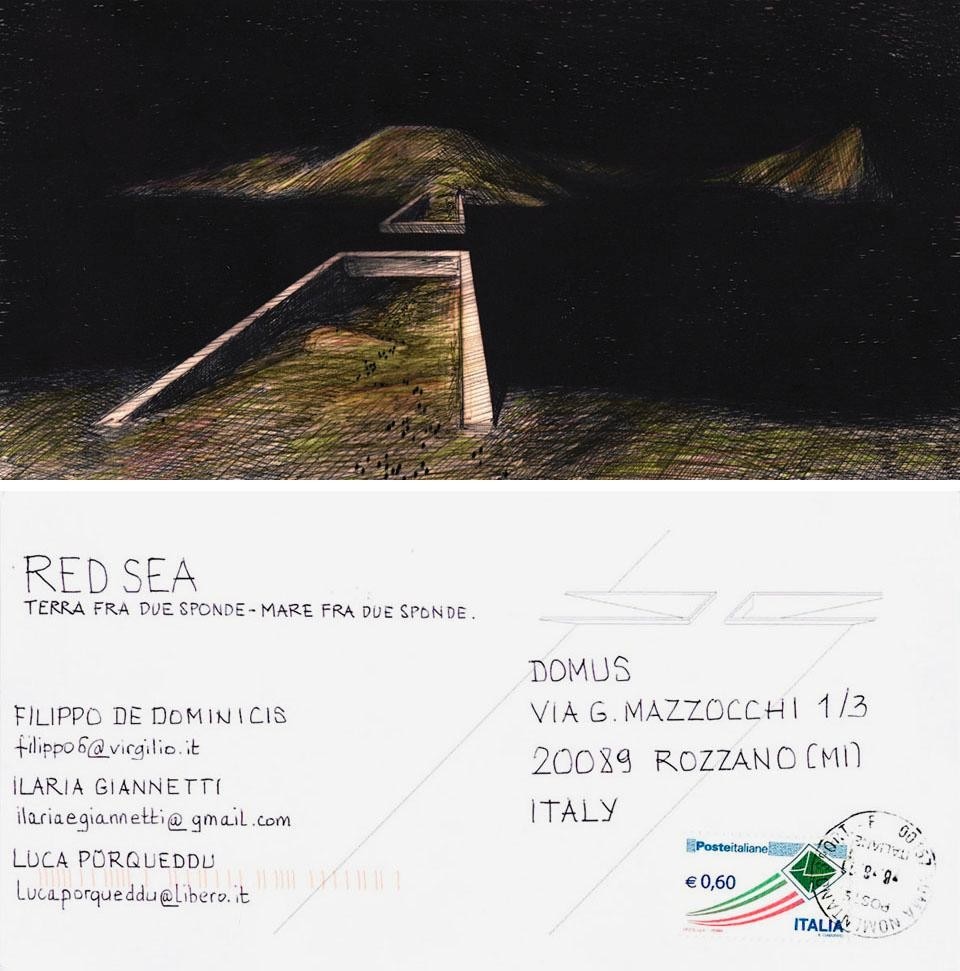
I adopted as the criterion for selecting these postcards a perspective that seeks to break the geopolitical assumptions that appear responsible for the perpetuation of differences, perhaps even suggesting possible solutions.
